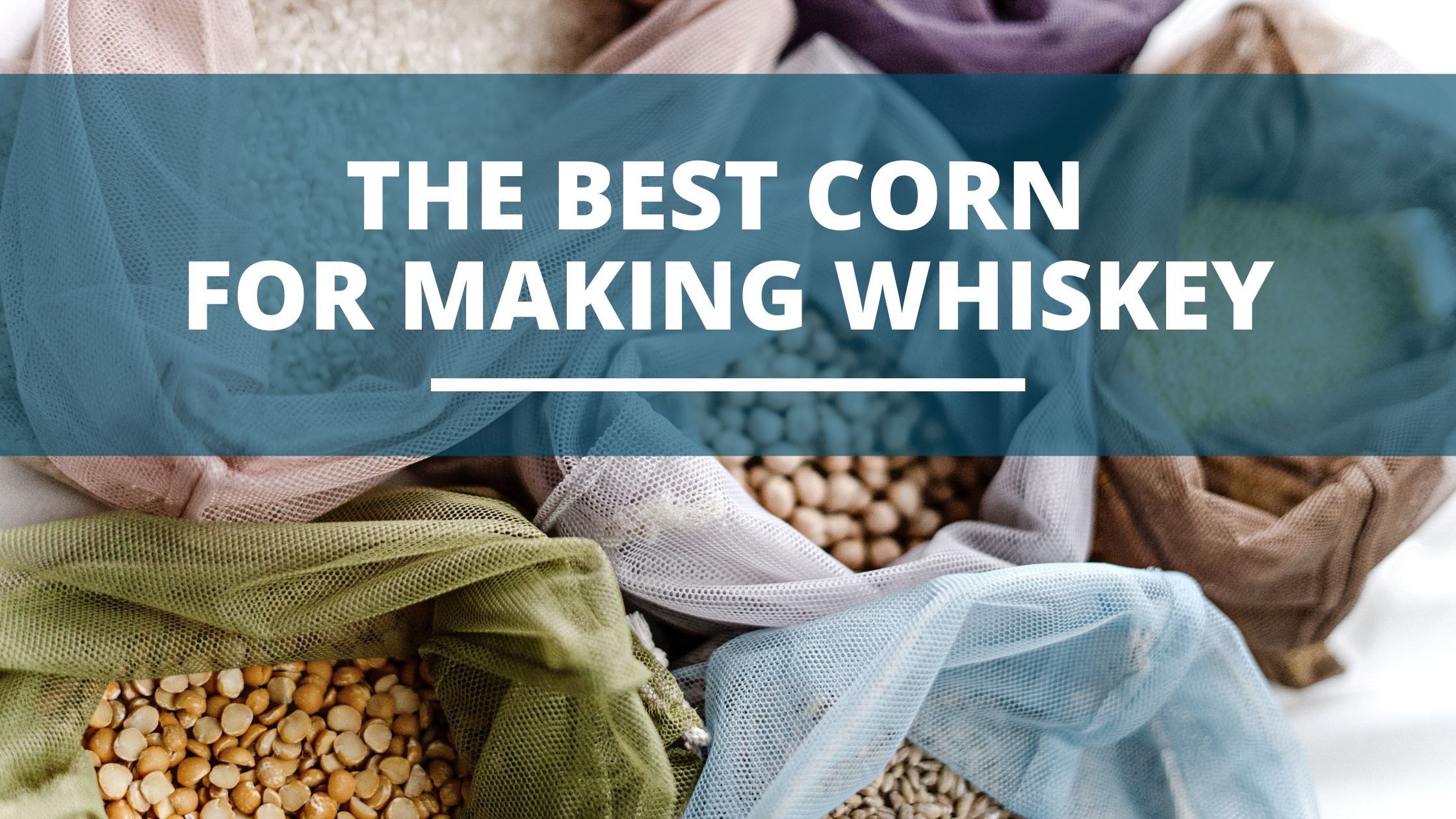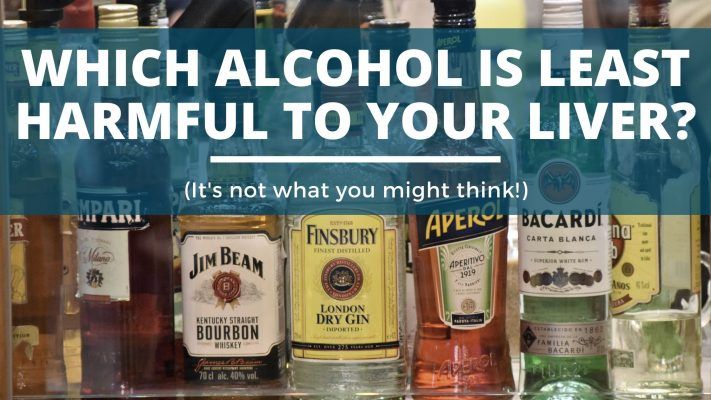Ingredients, Spirits, Sugars, Starches and Grains, Whiskey
The Best Corn For Distilling (Making Whiskey and Moonshine)
Corn is the basis for the production of whiskey and moonshine. It has a starch content necessary for fermentation, and when combined with a decent enzyme, it can create the desired ABV.
But not all corn is created equal.
Some varieties, like corn flour, have a low starch content and are only suited to making corn flour. And they won’t necessarily produce a decent flavor profile. The best corn for distilling is yellow dent and heirloom flint corn. They have a high starch content and produce a distinct and unique flavor.
Whether you’re a beginner or advanced distiller looking to create unique flavor profiles, carry on trading this post.
We’ll explore the best corn for making whiskey and moonshine and the flavor profiles you can achieve when using these varieties.
Table of Contents
A Brief History of Corn Whiskey And Moonshine
Corn whiskey was introduced to America by Irish settlers in the mid-1700s. They began distilling whiskey in Kentucky and Tennessee during the Whiskey Rebellion, using whatever resources were available. Because corn was vastly grown, it was the main ingredient used. The whiskey trade developed around the 1800s, and this gave rise to legislation around what could be considered bourbon and corn whiskey.
The practice of making moonshine was popularized during the Prohibition era. Home distillers would secretly distill alcohol in their backyard, apparently under the moonlight. They would produce, sell and transport alcohol during the late hours of the night to prevent being caught by the government.
During the late 1700s, the government became aware of this unlawful act and began to regulate the industry by placing hefty taxes on high-proof spirits. Conversely, the demand for homemade alcohol increased because no consumer wanted to spend heaps of money on their much-loved drink.
What’s The Difference Between Whiskey, Bourbon, And Moonshine?
Moonshine is alcohol that has been produced and stored illegally. Other names for moonshine include white whiskey and white lightning. Although it’s generally made from corn and sugar, moonshine can be prepared from any high-starch crop.
Whiskey is a distilled alcoholic beverage made from fermented grains aged in wood casks. The grains used can be anything from barley, corn, rye, or wheat. The grains are often cracked open to release sugars that aid in the process of fermentation.
Bourbon is whiskey made from 51% corn. According to the Alcohol and Tobacco Tax and Trade Bureau, for this native American spirit to be called Bourbon, it has to be made in the US and be aged in oak barrels for 2 years or more at a maximum of 62.25% ABV (125 proof). Also, it shouldn’t be bottled at less than 40% ABV (80 proof).
What Type Of Corn Is Used To Make Bourbon Whiskey
The basis of most whiskeys is corn. From here, the distiller gets to choose which corn is best suited for the desired flavor profile of the final product.
Even though dent corn is the most commonly used type, distillers, especially craft distillers, tend to experiment with other unique strains to produce a unique spirit.
Here are the commonly used to make bourbon whiskey.
1. Sweet corn
As the name implies, sweet corn has a high sugar content. It’s often harvested while tender because it still has a high water content. It’s preferred because it reduces the need to mill and gelatinize it. Sweet corn is often sold fresh, frozen, or canned.
2. Popcorn
Popcorn is a type of flint corn that was found in China in the early 1900s.
When cooked, the texture is similar to glutinous rice. The corn is mostly shell and has low sugar content.
3. Flint
Commonly known as Indian corn, flint is a hard-shelled, multi-colored, and nutrient-rich variety. It’s often used as livestock or to make cornmeal and polenta.
Another variety making waves in the craft distilling industry is heirloom flint corn.
It’s revered because it produces a much more intense flavor and adds a unique taste to the final product. Heirloom strains are planted by hand,rain-fed, and open-pollinated.
Depending on the strain you use, you can expect to get notes of honey, banana, or blueberry.
4. Flour corn
Flour corn is well, used to make flour. It has an exceptionally soft texture, making it easy to grind into fine corn flour. It also has a low sugar and starch content.
5. Pod corn
Commonly known as “wild maize”, pod corn develops leaves all around each kernel.
6. Dent corn
Dent corn, also known as field corn, is the predominant corn used to make whiskey. It’s widely grown, making it readily available and cheaper to use.
Field corn has a high starch but low sugar content.
It’s often left to harden and dry. That means it loses much of its sweetness and doesn’t impart many sugary flavors to the final product.
What Corn Is Most Commonly Used For Whiskey?
Distillers have a knack for keeping their recipes secret, but we did manage to find out what type of corn is used by a few commercial brands.
1. Ironroot Hubris Corn Whiskey
Ironroot uses heirloom varieties, and the final spirit is full of complexity. You can pick up notes of apple, vanilla, cotton candy, and oak.
5. Evan Williams Bourbon Whiskey
Evan Williams is made from feed corn and has caramel. The spirit has rich baking spices notes with hints of dark cherry.
2. Balcones Baby Blue
Balcones is made from 100% Texa blue corn. This creates a buttery mouthfeel with notes of banana bread and honey.
4. Jack Daniel’s
This popular brand uses No. 1 yellow dent corn. The final product has notes of banana and nuts and a caramel finish.
3. Abasolo El Whiskey de Mexico
Abasolo uses a variety of heirloom Mexican corn. The result is a light and floral forward spirit.
Which Type Of Corn Makes The Best Whiskey?
If you’re looking for a cheaper alternative, we recommend you use yellow dent corn. It’s readily available and has a high starch content. If you add grains with high enzymatic power, the corn’s starch will convert to fermentable sugar, giving you a fantastic ABV.
When looking to create a unique bottle, and have a few bucks to spare, you can add a couple of heirloom kernels to create a medley of fruity and caramel flavors.
Corn Whiskey Mash Recipe
Here’s a step-by-step guide to making a corn whiskey wash.
- Grain grinder
- Hydrometer
- Fermenter
- Sterilized glass jars
- Pot still
- Stainless steel pot
- Thermometer
- Oak barrel or oak chips/cubes
Ingredients
- 8.5 pounds (4kg) of yellow dent corn
- 1.5 pounds (1kg) of malted barley
- 1 packet whiskey yeast
- 5 gallons (19 liters) of water
Making a Mash
Crushing the corn
Grinding the corn makes it easier for the starches to be released when you boil it. Using the grain grinder, crush the corn until it resembles coarse flour.
Also, grind the barley just until it cracks open.
Boiling the corn
Now that you’ve cracked open your corn and barley, it’s time to get them cooking. Follow the steps below to boil your corn.
- Pour the water into the pot and heat it to 70℃ (158℉).
- Pour the corn into the pot.
- Stir every 5 minutes until the temperature drops to 67°C (152°F).
- Stir in the barley.
- Allow the mixture to boil at 65℃ (149℉) for 60-90 minutes.
- Stir every 10-15 minutes and ensure the temperature doesn’t drop below 61℃ (141℉).
- Remove the lid and let the contents cool to 25℃ (77℉).
Starch Conversion
Because barley has high diastatic power, it will convert the starches in the corn to fermentable sugars.
So, once cooled, the starches will have converted into sugars.
Fermentation
A few steps go into preparing the mixture for fermentation. This ensures you harness the power of your wash to produce the ideal ABV.
Depending on the temperature in your environment, it can take up to 2 weeks for the wash to ferment.
Follow these steps to ferment your wash.
Yeast Starter
Making a yeast starter allows viable cells to multiply, helping kickstart fermentation.
Here’s what you’ll need to make a 2-liter starter.
- 200 g dry malt extract (DME)
- 2 liters of water
- ¼ tsp yeast nutrient (optional)
- Sanitized glass jar
- Sterilized funnel
- A bucket filled with ice cubes and water
- Ice cubes
Instructions:
- Pour the DME and yeast nutrient (if using) into a bowl. Combine well.
- Pour the water into a pot and put the pot onto a stove.
- When the water begins to boil, add the DME mixture.
- Let the solution cook for 15 minutes on medium heat.
- Stir occasionally to ensure there aren’t any clumps.
- Strain the mixture into the jar.
- Place the jar into the bucket.
- Check the temperature of the starter. When it drops below 80℉ (27℃), add the yeast.
- Give it a good shake.
- Let it sit for 24 hours.
Straining
- Pour the wash into a bucket.
- Once the solids have settled, siphon the mixture into the fermenter.
- To aerate the mixture, stir well.
- Measure the specific gravity and take a temperature reading.
- Add your yeast starter when the temperature reaches 75-85℉ (23-29℃).
- Place the fermenter in a room with temperatures of 18-25℃ (64-77℉). Attach the airlock.
- When the airlock stops bubbling, the wash is ready to hit the still.
Conclusion
Trying to decipher which corn can be challenging, especially if you’re new to the craft.
While corn generally has a high starch content, this varies from one variety to the next.
When looking to make a corn whiskey, your best bet is yellow dent corn. The variety is known to create a smooth final product. And if you want to turn things up a notch, you can incorporate heirloom flint corn.
It’s a favorite amongst craft distillers and produces a uniquely unparalleled final product.
As home distillers, there are a lot of grains and crops we can experiment with, and if you’re looking to create authentic corn whiskey, look no further than the suggested corn in this post.
Related Posts
The Ultimate Corn Whiskey Recipe (Distilling Bourbon)
As you advance in the home distilling craft, it’s always a terrific idea to experiment{...}
Which Alcohol Is Least Harmful To Your Liver?
Alcohol is well known for not being particularly good for you.. and most people understand that{...}
How Do Whiskey Stones Work (And Are They Better Than Ice?)
Whiskey stones have mysteriously risen to the top of the list of drinking trends over{...}
How To Make Whiskey (A Step-by-Step Guide)
Nothing oozes more pleasure than being able to craft your own whiskey. You can play{...}












